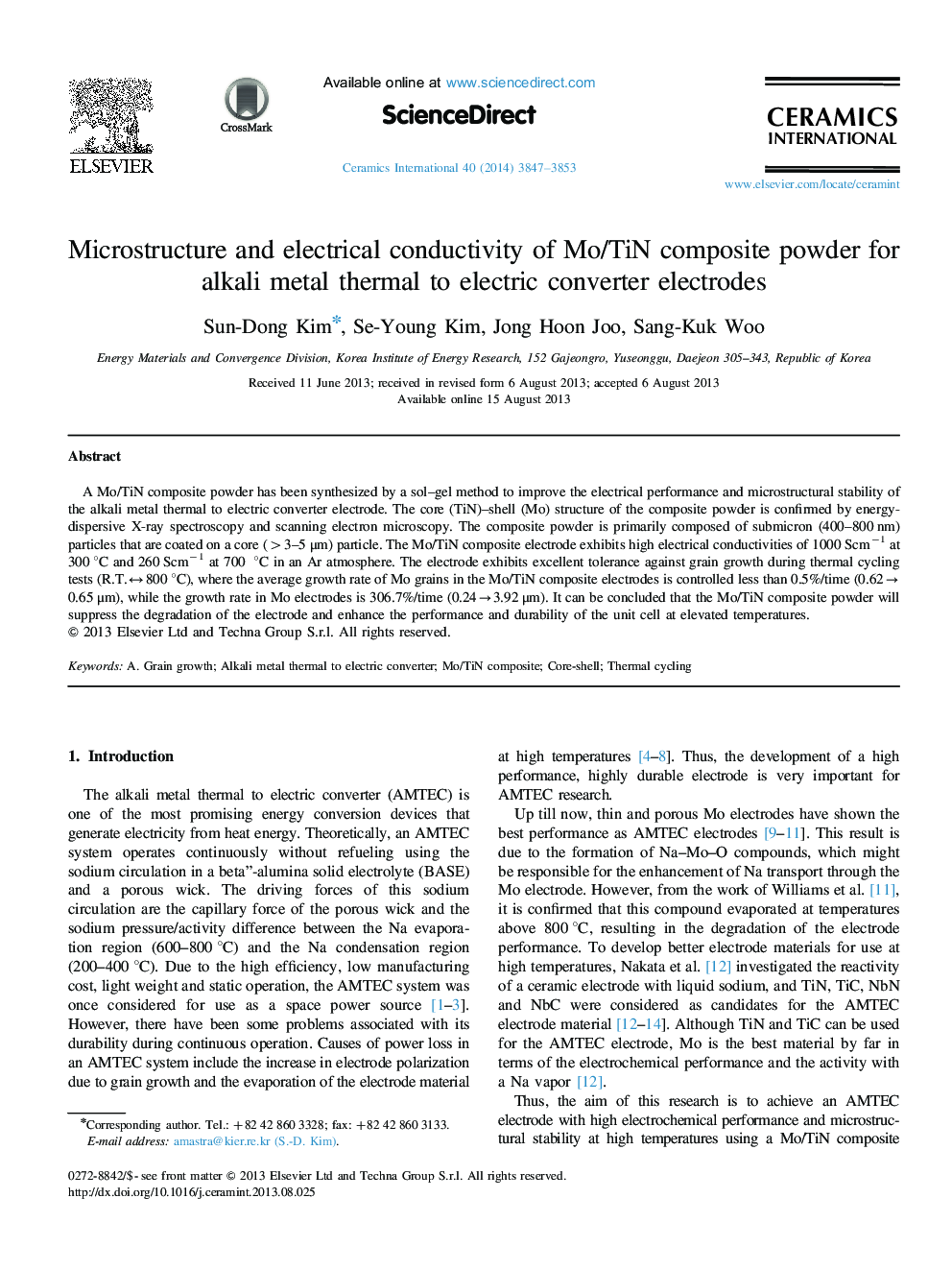| Article ID | Journal | Published Year | Pages | File Type |
|---|---|---|---|---|
| 1461397 | Ceramics International | 2014 | 7 Pages |
A Mo/TiN composite powder has been synthesized by a sol–gel method to improve the electrical performance and microstructural stability of the alkali metal thermal to electric converter electrode. The core (TiN)–shell (Mo) structure of the composite powder is confirmed by energy-dispersive X-ray spectroscopy and scanning electron microscopy. The composite powder is primarily composed of submicron (400–800 nm) particles that are coated on a core (>3–5 μm) particle. The Mo/TiN composite electrode exhibits high electrical conductivities of 1000 Scm−1 at 300 °C and 260 Scm−1 at 700 °C in an Ar atmosphere. The electrode exhibits excellent tolerance against grain growth during thermal cycling tests (R.T.↔800 °C), where the average growth rate of Mo grains in the Mo/TiN composite electrodes is controlled less than 0.5%/time (0.62→0.65 μm), while the growth rate in Mo electrodes is 306.7%/time (0.24→3.92 μm). It can be concluded that the Mo/TiN composite powder will suppress the degradation of the electrode and enhance the performance and durability of the unit cell at elevated temperatures.
